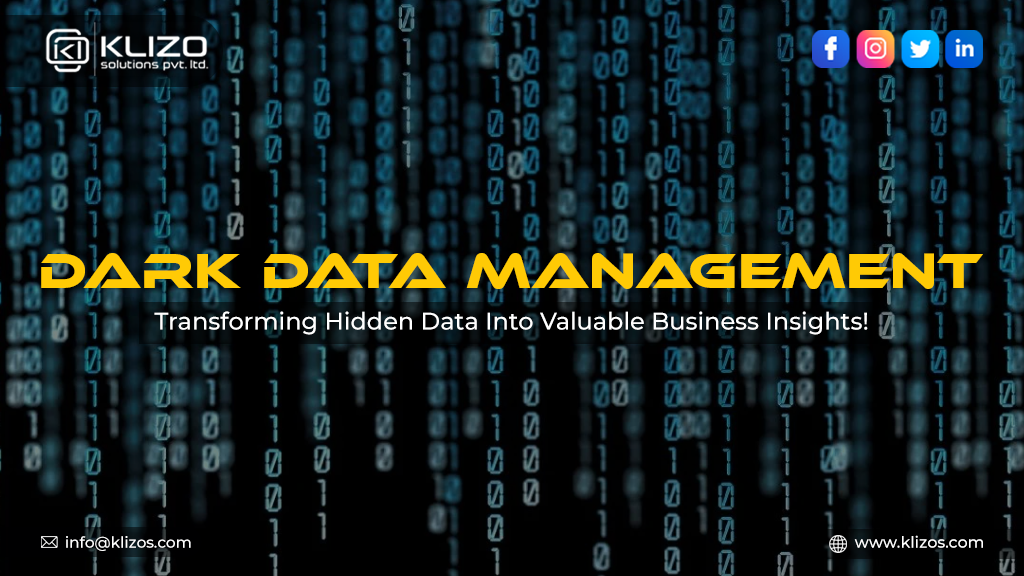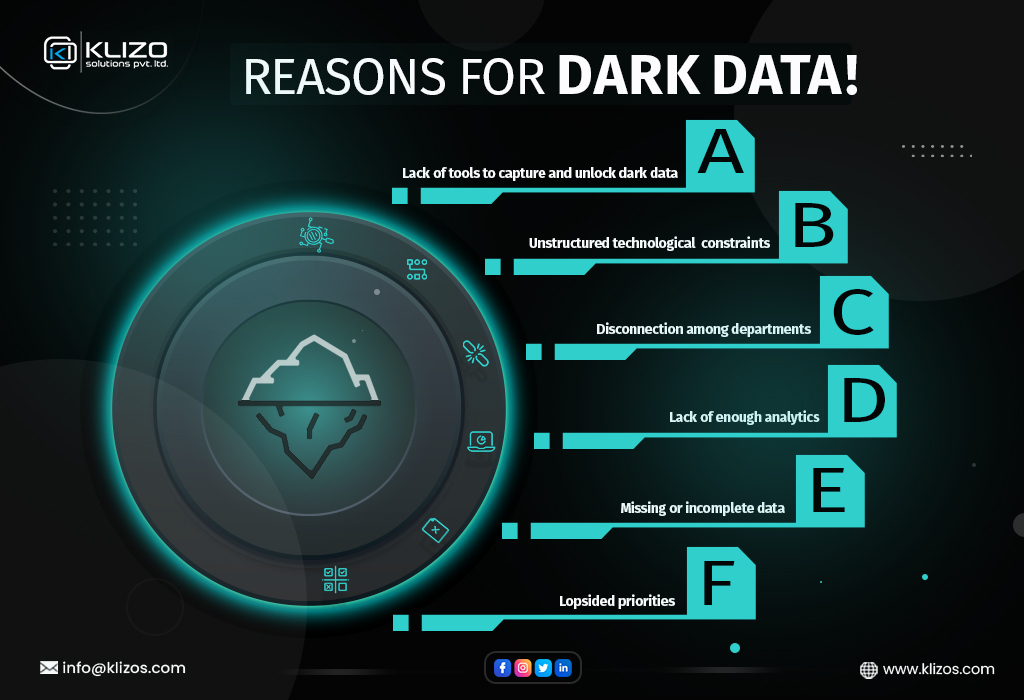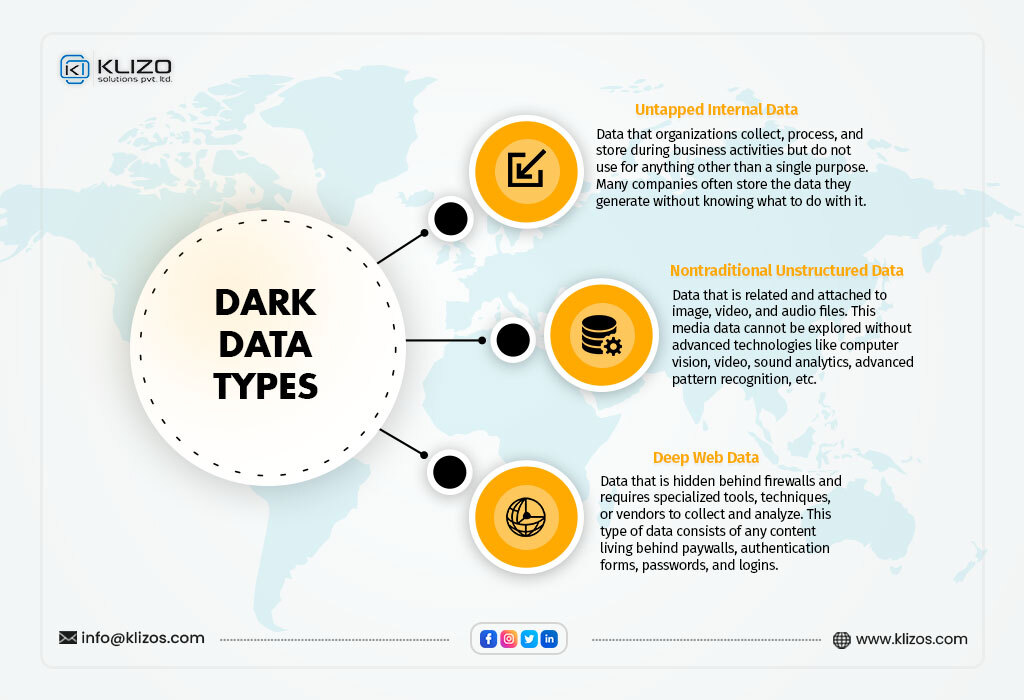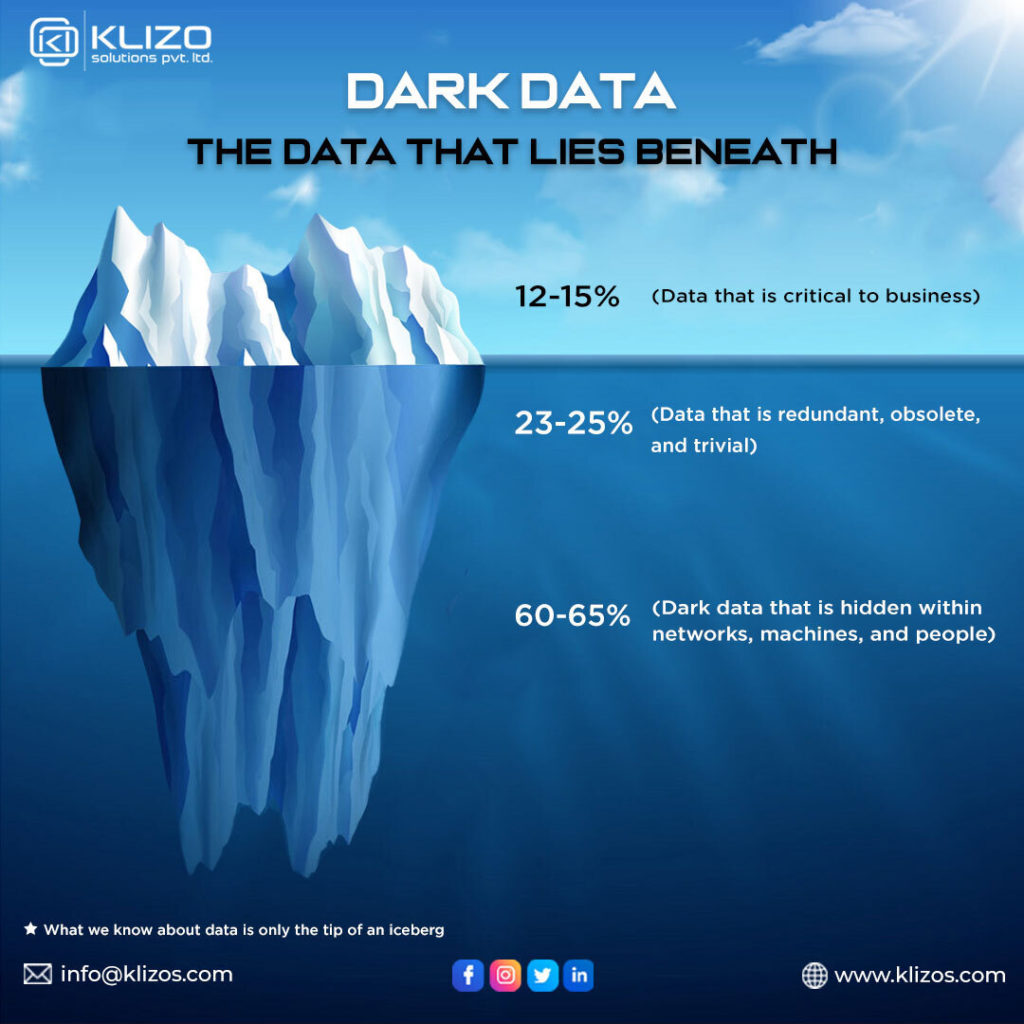


Did you know that a recent estimate suggests that 90% of a company’s data consists of different types of dark data? As the interest in big data has increased rapidly, the amount of information businesses collect has also grown over the last few years. To make use of more and more data, companies are investing in talent and modern technologies to leverage the value of this data.
But despite the efforts, nearly 60-73% of all enterprise data goes unused. For example, in the manufacturing industry, it has been estimated that around 90% of data generated by analog-to-digital conversions and sensors never really get used! Plus, organizations are sometimes unaware that they are creating useful data. But if companies can carry out dark data management successfully, it will make a huge difference in enhancing their operations and processes. As a result, making critical decisions will be a lot easier.
Do not let the name Dark Data scare you if you don’t know what it is or why managing it matters so much. Well, it is nothing like what the name suggests. Dark data can serve as the light at the end of the tunnel for businesses when managed and analyzed well. It is more like a buzzword like Big Data. Once you know in detail about it, what it is, and why it is so significant across businesses and organizations, you will not feel baffled anymore!
So without any further delay, let’s dive into the space and understand how analyzing and managing it can impact your organization.
Dark data, also known as dusty data, refers to the data your business collects but never fully exploits. It refers to all the data that a company’s CRM, HTTP, ERP, SCADA, and WiFi system generates but is never analyzed or captured. Sometimes, organizations are not even aware that they are collecting dark data. Therefore, the collected data remains unutilized and never gets analyzed for purposes like direct monetization, analytics, business relationships, etc. Mostly, the information becomes unusable due to its huge quantity, location, and the lack of resources required to analyze or collect it.
According to the IT Glossary of Gartner, dark data is –
We know the data that is visible to the users, such as Instagram profile names, photos, hashtags, etc. Similarly, some data is not visible to the users, such as where the user was when he posted the photo on Instagram or how many login instances the users have on Instagram, etc. It emerges from the point of view of users. And just like structural data refers to data’s structural qualities, dark data refers to its visible qualities.

In simpler words, organizations collect a vast amount of unstructured data. As per one study on dark data statistics in 2018 by IBM, 80% of all data is dark and unstructured. This unstructured data includes everything, from customer information to previous employee profiles, raw survey data, etc. And unfortunately, most of the data is not utilized, which becomes known as dark data. Dark data is the unstructured data that never gets analyzed. It gets stored in data lakes through different network processes and sits there in an unstructured, unworkable, and poorly labeled format without being used.
Different types of dark data exist based on various industries. For example, a shopping app might collect browser history (dark data), and a running app might collect weather data. Anything sent over the internet has the potential to create or become dark data. Examples are wide-ranging, depending on the company and industry. Here, we have listed some of the most common unstructured, unutilized, and outdated dark data categories.

The different dark data types can also include non-traditional unstructured data (typically attached to an image, audio, and video files), untapped internal data, hidden data behind firewalls (deep web data), etc.
There are plenty of reasons you need to pay attention to dark data management. Check out some of these here.
As the amount of dark or unstructured data grows, it requires more storage space. Since dark data refers to non-accessible information, it leads to the costly concern of low ROI in storage space. As per studies, data centers waste almost 90% of their energy on storing it, which can, otherwise, be used to store more accessible structured information. So when you utilize dark data, you can deal with the storage space issue and foster financial savings at the same time.
Dark data is the data that organizations never really access. Naturally, it limits an organization’s potential to produce the most beneficial data analysis. Plus, organizations that do not have the budgets or expert data analysts miss out on the opportunities of leveraging the potential of data that is still untapped. It analysis might reveal valuable business, operational, and customer insights that the structured data in the control of your organization can never offer.

There are numerous data protection laws and privacy regulations these days meant to protect consumer data and reduce the sale of personal information. These laws pose a challenge to businesses that collect consumer data, as non-compliance with these regulations can result in steep fines and compromise the company’s reputation.
We know that dark data is typically unstructured and unorganized data. And it may contain proprietary and sensitive information that can be extremely dangerous when falling into the wrong hands. As data breaches become more common, not safeguarding it means becoming vulnerable to security threats.
And if by any chance, consumers’ personal data (dark data) is breached, it can expose the consumers to potential identity fraud and other security risks. However, when you put the collected data to the appropriate use, you can strengthen your organization’s security procedures and better safeguard the digital assets from data theft attacks.
Dark data management can offer great value to companies. Let’s consider a few examples. Analyzing the server log files can offer clues to website visitor behavior. Managing and analyzing the data from recordings or surveillance videos can provide customer sentiment data, and geolocation data can give new insights into logistic and shipping operations. Dark data analysis enables you to see if there’s any additional insight or value to gain. Organizations that can analyze relevant data can turn previously unused data into powerful insights that will open new opportunities, increase ROI (Return-on-investment) and reduce risk.
But wait, not knowing the right way to apply it can cost businesses. As more and more companies are taking advantage of untapped data, those who don’t may lose revenue opportunities, face quality issues, diminished productivity, and lower efficiency.
There is a large amount of dark data out there! In the future, the dark data percentage is likely to increase more. And more unused dark data means more lost opportunities for businesses.
So, you may have opted for Big Data collection. But not making proper use of dark data means that you are missing out on many opportunities that could have propelled the success of your business further. Combining structured and unstructured data is essential for any business to drive valuable results. The sooner you will realize the perks of dark data, the greater access you will have to such insights, which can help with yielding competitive advantages.
Do you find such detailed and informative articles on business-relevant topics and technologies interesting? Then, stay tuned for more! From blockchain to artificial intelligence, computer vision, AR/VR, Deepfake, and more, we cover all the latest technologies you might need to know about to boost your business processes and online presence! You can always get in touch with us if you want to implement advanced technological solutions and make your business new heights!
Previous article
Joey Ricard
Klizo Solutions was founded by Joseph Ricard, a serial entrepreneur from America who has spent over ten years working in India, developing innovative tech solutions, building good teams, and admirable processes. And today, he has a team of over 50 super-talented people with him and various high-level technologies developed in multiple frameworks to his credit.

Subscribe to our newsletter to get the latest tech updates.